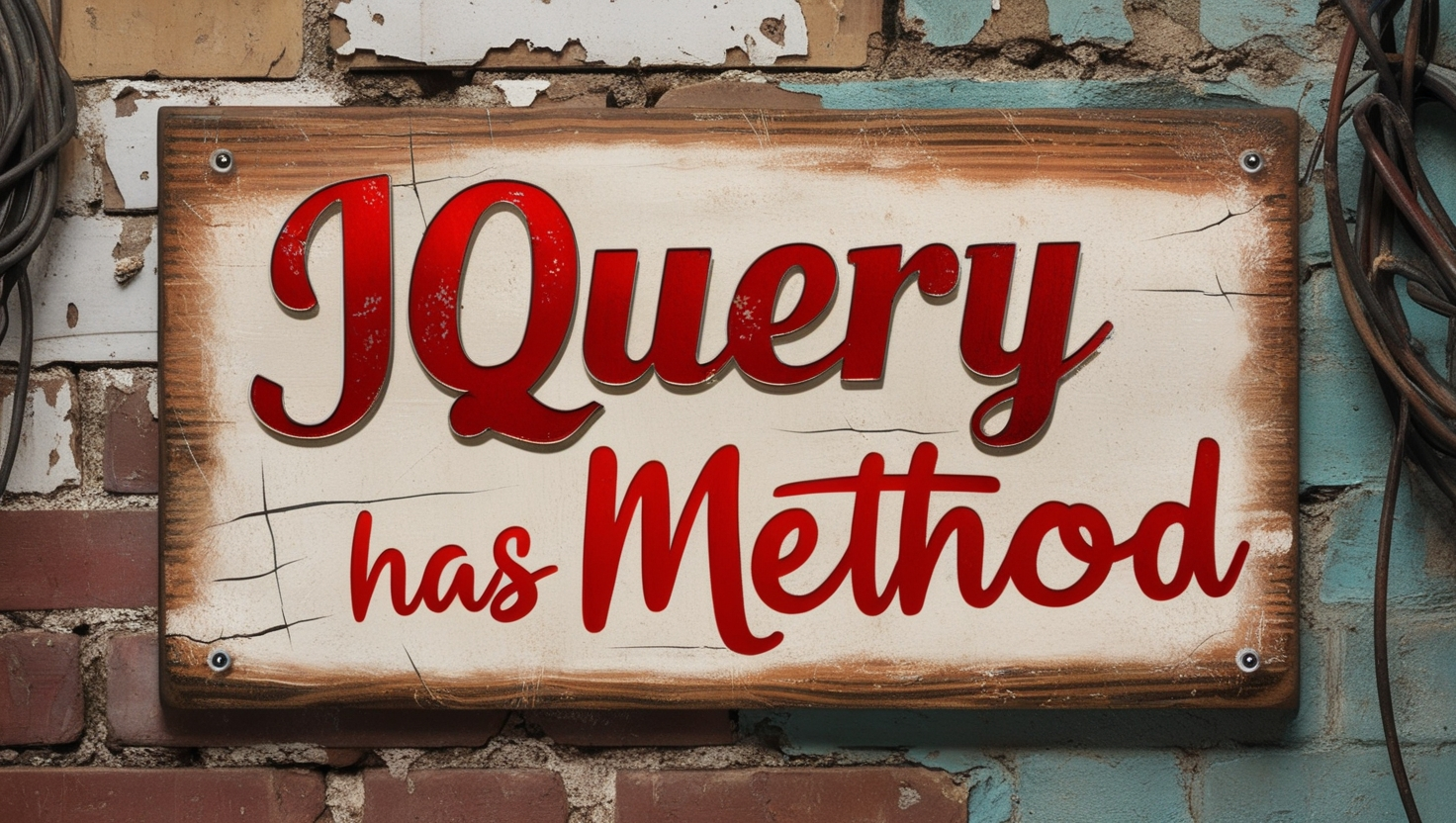
jQuery Topics
- jQuery Introduction
- jQuery Callbacks
- jQuery deferred
- jQuery selectors
- jQuery Ajax Events
- jQuery Ajax Methods
- jQuery Keyboard Events
- jQuery Keyboard Methods
- jQuery Form Events
- jQuery Form Methods
- jQuery Mouse Events
- jQuery Mouse Methods
- jQuery Event Properties
- jQuery Event Methods
- jQuery HTML
- jQuery CSS
- jQuery Fading
- jQuery Traversing
- jQuery Utilities
- jQuery Properties
jQuery .has() Method

Photo Credit to CodeToFun
🙋 Introduction
jQuery offers a plethora of methods to manipulate the DOM and traverse through elements efficiently. Among these, the .has() method stands out as a powerful tool for filtering elements based on their descendants. Understanding and leveraging the .has() method can significantly enhance your ability to work with complex HTML structures.
In this comprehensive guide, we'll explore the usage of the jQuery .has() method with practical examples to illuminate its potential.
🧠 Understanding .has() Method
The .has() method allows you to filter elements based on whether they contain specific descendants. This method comes in handy when you want to select elements that have certain child elements or meet specific criteria.
💡 Syntax
The syntax for the .has() method is straightforward:
$(selector).has(filter)📝 Example
Selecting Elements with Specific Descendants:
Suppose you have a list of <div> elements and you want to select only those that contain <p> elements. You can achieve this using the
.has()method as follows:index.htmlCopied<div> <p>This div contains a paragraph.</p> </div> <div> <span>This div does not contain a paragraph.</span> </div>example.jsCopied$("div").has("p").css("border", "2px solid green");This will apply a green border to the <div> elements that contain <p> elements.
Filtering Elements Based on Descendants' Attributes:
You can also use the
.has()method to filter elements based on the attributes of their descendants. For instance, let's select <li> elements that contain <a> elements with a specific class:index.htmlCopied<ul> <li><a href="#" class="active">Link 1</a></li> <li><a href="#">Link 2</a></li> </ul>example.jsCopied$("li").has("a.active").css("font-weight", "bold");This will make the text of the <a> elements with the class active bold.
Chaining with Other jQuery Methods:
The
.has()method can be combined with other jQuery methods for more complex selections. For example, let's find <div> elements that contain both <p> and <span> elements:index.htmlCopied<div> <p>This div contains a paragraph.</p> <span>And a span.</span> </div> <div> <p>This div contains only a paragraph.</p> </div>example.jsCopied$("div").has("p").has("span").css("background-color", "lightblue");This will set the background color of the <div> that contains both <p> and <span> elements to light blue.
🎉 Conclusion
The jQuery .has() method is a versatile tool for filtering elements based on their descendants, offering immense flexibility in DOM manipulation. Whether you need to select elements with specific child elements, filter based on descendants' attributes, or chain with other jQuery methods, the .has() method provides a straightforward solution.
By mastering its usage, you can streamline your DOM traversal and manipulation tasks, making your web development endeavors more efficient and effective.
👨💻 Join our Community:
Author

For over eight years, I worked as a full-stack web developer. Now, I have chosen my profession as a full-time blogger at codetofun.com.
Buy me a coffee to make codetofun.com free for everyone.
Buy me a Coffee












If you have any doubts regarding this article (jQuery .has() Method), please comment here. I will help you immediately.